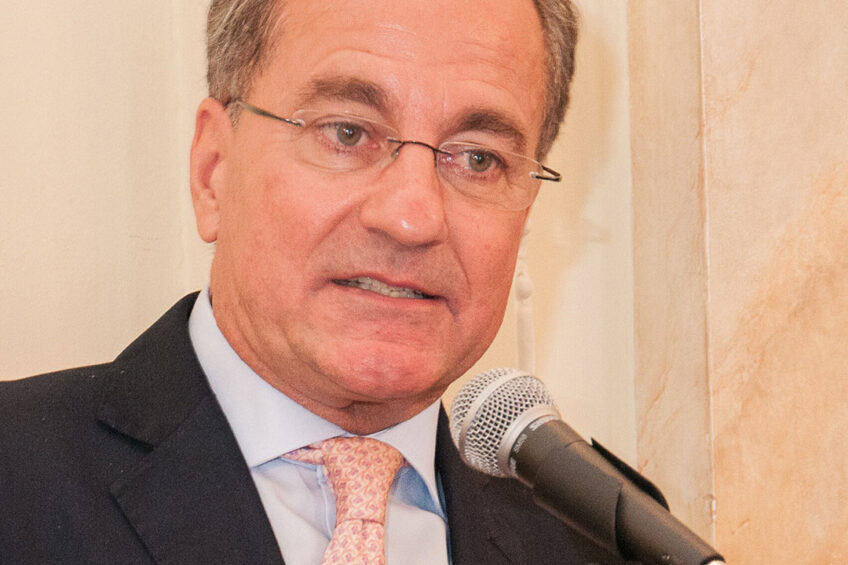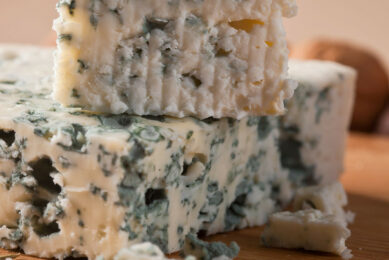Spain’s dairy industry: an inside view

When we think of Spain, we probably think of paella, flamenco, bullfighting and a lot of sunshine. It’s no wonder the Spanish tourism sector represents 12% of the country’s GDP, whereas the agriculture, livestock, silviculture and fishing sector barely represent 2.6%. However, the dairy industry is one of the most important in Spanish agri-business, generating a turnover of around € 13 billion a year and creating more than 60,000 direct jobs.
According to Luis Calabozo, general director of the National Federation of Dairy Industries of Spain (FeNIL), the industrial arm of the sector has a turnover of around € 9 billion a year, which represents 2% of industrial production in the country, creates 30,000 jobs and represents almost 8% of employment in the agri-food sector.

In the EU
According to data from the European Commission, Spain is one of the 6 major producers of cow milk in the EU, alongside Germany, France, Poland, the Netherlands and Italy. Together, they are responsible for almost 70% of the communitarian milk production. Of the 156 million tonnes that the EU is estimated to produce per year, Spain provides 4.6%, having provided 7.2 million tonnes in 2019.
“The sum of the deliveries of cow, sheep and goat milk made in 2019 shows that the dairy industry absorbs more than 8.2 million tonnes of milk from Spanish origin per year,” says Calabozo, talking about cow milk production plus the 512,000 tonnes of sheep milk and 475,000 tonnes of goat milk exported by Spain in 2019.

According to the figures from the Spanish Agricultural Guarantee Fund (FEGA), Spain is the top exporting country of goat milk in the European Union and the second producer of this dairy, representing 20% of EU production. Furthermore, Iberians produce around 15% of sheep milk and 5% of the total cow milk output in the EU.
In spite of these figures, Spain still imports more dairy products than it exports, and the imports “have played a relevant role in the sector as a consequence of historic matters derived from the European production quota system that existed until April 2015. More than 98% of the imports were provided by other EU countries,” claims Calabozo. Nevertheless, this tendency has been changing for some time now.

According to data from the Directorate General of Customs, since 2010 the trade balance of this sector in Spain has improved continuously, reducing by almost 70% the trade deficit it experienced at the beginning of the decade, which started with 800,000 tonnes more imported than that produced in the country. In 2019, this gap had been reduced to less than 300,000 tonnes.
 How to maximise dairy farm profits in warm countries
How to maximise dairy farm profits in warm countries
Lactating cows are forced to overcome thermal stress while maintaining their high productivity, especially in warmer European countries.
Star product – cheese
The most internationally recognised Spanish dairy product is cheese, shipments of which increased more than 230% between 2010 and 2019, going from 46,000 to 107,000 tonnes exported. “The offer of Spanish cheese is very wide, although we could say that traditional Spanish pressed paste cheese is the most representative of our country, both in its pure sheep version and mixtures (e.g. Manchego, Zamorano, etc.),” adds Calabozo.
Currently, cheese represents almost half of the Spanish dairy sector’s imports, with a total of 309,742 tonnes imported in 2019, followed by yoghurts and fermented milk products, with 174,277 tonnes. As a counterpart to the cheese export figures we must add the 123,484 tonnes of yoghurt and fermented milk products exported in the same period, which together account for almost half of the sector’s total exports.
![]() Global dairy market
Global dairy market
Overview of prices for: raw milk, dry whey, skimmed milk powder, cheese and butter, as well as global dairy trade and world prices for dairy products.
Exports and imports
According to ICEX España Exportación e Inversiones, Spain exported more than € 1.3 billion in the dairy sector in 2019, and the main recipients of its imports were France, Portugal and Italy, together totalling more than € 686 million, or 51.4% of total revenues.
Regarding imports, in the same period Spain imported more than € 2 billion, and the main countries of origin were France, Germany and the Netherlands, with more than € 1.25 million. Between the 3, they represent 61.66% of the total imports of the Spanish dairy sector.
Up to August 2020, Spain had exported around € 908.7 million of dairy products, whereas its imports totalled € 1.28 million.
Even in the toughest moments of the pandemic, the sector’s commitment to society was clear and there were no shortages…”
Main dairy producers
The main dairy-producing company in Spain, according to the Informa D&B ranking of companies, is Corporación Alimentaria Peñasanta, Sa or CAPSA, made up of 95 commercial brands, including Central Lechera Asturiana, LARSA and ATO. In 2019, this Asturian corporation had a turnover of more than € 720 million, 0.56% less than the previous year, in which it sold more than € 724 million.
The second place is held by the company Lactalis Compras y Suministros SL, a multinational of French origin whose main branch in Spain is based in the city of Lugo. Its best-known brands are Président cheeses and La Lechera dairy desserts. In 2019, the Spanish branch of this company had a turnover of about € 431 million, 2.44% more than the previous year, in which it totalled just over € 420 million.
The dairy company with the third highest turnover in 2019 in Spain was Industrias Lácteas de Granada Sociedad Limitada. With 24 trademarks, including Puleva, this Granada company had a turnover of € 354 million in 2018, 1.83% less than in 2017, when it exceeded € 360 million in revenues.
The top 10 is completed by Industrias Lácteas Asturianas SA (Asturias), Schreiber Foods España S.L. (Toledo), Leche Celta SL (Coruña), Esnelat SL (Gipuzkoa), Grupo Leche Rio SA (Lugo), Leche de Galicia SLU (Lugo) and Kaiku Corporación Alimentaria SL (Gipuzkoa).
 Covid-19: Impact on the global dairy sector
Covid-19: Impact on the global dairy sector
The coronavirus has had a huge impact on daily life from the man on the street to businesses. And the dairy sector, even more essential than ever, has not gone unscathed. Keep up-to-date.
Covid-19 and other challenges
As for all food industries around the world, the main challenge faced by the dairy industry in Spain was to maintain dairy supplies during the Covid-19 pandemic. According to Calabozo, the sector demonstrated exemplary behaviour, guaranteeing consumers access to its products. “Even in the toughest moments of the pandemic, the sector’s commitment to society was clear and there were no shortages,” he adds.
In addition to the pandemic, Calabozo warns that the Spanish dairy sector faces various challenges, such as “increased consumption of all types of dairy products; the adaptation of the sector to the new European commitments to environmental sustainability (Green Deal and Farm to Fork strategy); and the growth of exports, given the great export potential of the Spanish dairy sector.”
Economic recovery
Although the immediate future is marked by the consequences of the pandemic, the great growth potential of the dairy sector in Spain, together with the continuity of its operations during this year, is playing an important role in the reactivation of the country’s economy. In Calabozo’s words: “The Spanish dairy sector does not operate in isolation in our country, but rather we are part of a global sector in which there are many interconnections. In any case, we hope that if the vaccine is developed during 2021, little by little the sector will return to its growth path – without a doubt the agri-food sector will be one of the main actors in Spain’s economic recovery.”
Author: Zhandra Zuleta
Join 13,000+ subscribers
Subscribe to our newsletter to stay updated about all the need-to-know content in the dairy sector, two times a week.










